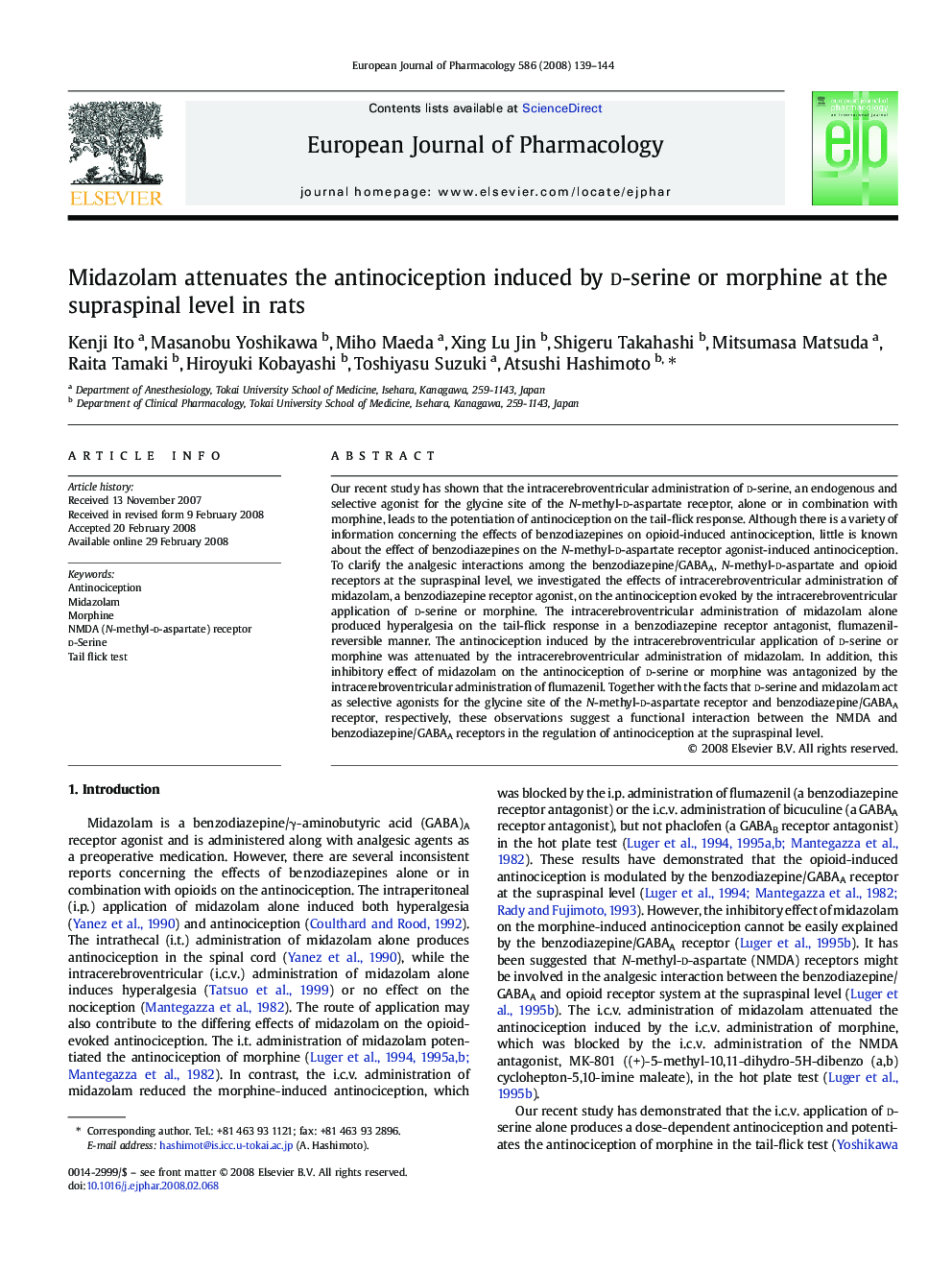| Article ID | Journal | Published Year | Pages | File Type |
|---|---|---|---|---|
| 2535250 | European Journal of Pharmacology | 2008 | 6 Pages |
Abstract
Our recent study has shown that the intracerebroventricular administration of d-serine, an endogenous and selective agonist for the glycine site of the N-methyl-d-aspartate receptor, alone or in combination with morphine, leads to the potentiation of antinociception on the tail-flick response. Although there is a variety of information concerning the effects of benzodiazepines on opioid-induced antinociception, little is known about the effect of benzodiazepines on the N-methyl-d-aspartate receptor agonist-induced antinociception. To clarify the analgesic interactions among the benzodiazepine/GABAA, N-methyl-d-aspartate and opioid receptors at the supraspinal level, we investigated the effects of intracerebroventricular administration of midazolam, a benzodiazepine receptor agonist, on the antinociception evoked by the intracerebroventricular application of d-serine or morphine. The intracerebroventricular administration of midazolam alone produced hyperalgesia on the tail-flick response in a benzodiazepine receptor antagonist, flumazenil-reversible manner. The antinociception induced by the intracerebroventricular application of d-serine or morphine was attenuated by the intracerebroventricular administration of midazolam. In addition, this inhibitory effect of midazolam on the antinociception of d-serine or morphine was antagonized by the intracerebroventricular administration of flumazenil. Together with the facts that d-serine and midazolam act as selective agonists for the glycine site of the N-methyl-d-aspartate receptor and benzodiazepine/GABAA receptor, respectively, these observations suggest a functional interaction between the NMDA and benzodiazepine/GABAA receptors in the regulation of antinociception at the supraspinal level.
Related Topics
Life Sciences
Neuroscience
Cellular and Molecular Neuroscience
Authors
Kenji Ito, Masanobu Yoshikawa, Miho Maeda, Xing Lu Jin, Shigeru Takahashi, Mitsumasa Matsuda, Raita Tamaki, Hiroyuki Kobayashi, Toshiyasu Suzuki, Atsushi Hashimoto,
